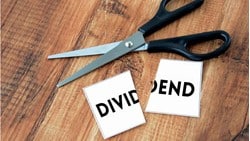 Sometimes I hear financial salespeople in Omaha say that “dividend investing” is one of the safest strategies an investor can follow. I disagree.
Sometimes I hear financial salespeople in Omaha say that “dividend investing” is one of the safest strategies an investor can follow. I disagree.
Buying stocks in order to get dividend yield can be dangerous.
First, dividends can be manufactured. For example, you can pay yourself a 10% “dividend” every year if you put your money in a simple checking account.
Let’s say you deposit $1,000. At the end of the first year, you take out $100—a 10% dividend of sorts. You’re left with $900, and at the end of the second year you withdraw $90—another 10% dividend, and so on.
While some might be thrilled about getting a 10% dividend every year, you aren’t, since your overall return is zero percent.
What makes this example meaningful is that some companies are (in my estimation) doing just this. They don’t generate the cash that they are paying out to their owners. This seems especially true with companies that have temptingly high dividend yields.
A few things tend to happen. The stock price languishes, perhaps dropping at some point, and the dividend eventually gets reduced or eliminated.
Sometimes people think that this won’t happen to “world-class” companies. Not true. General Electric was trading above $25 a share 14 months ago (9/1/2017). Its dividend was being paid at a rate of $0.96 a year, a pretty decent rate of over 3.8%.
Today it closed at $10.10 a share—a decline of 60%. And as if to rub some salt into the gaping wound, the board cut the dividend yesterday to $0.04 per share—a measly yield of four-tenths of one percent. Dividend investing didn’t work.
Similarly, a focus on dividend investing can coerce someone to buy bad companies.
More than a few people have told me that their strategy is to “live off the dividends” of their portfolios. They then find that they need to buy the stocks of companies paying high dividends in order to make their budgets.
Using these blinders, they can focus on some terrible investments.
Some Other Cautionary Examples of Dividend Investing
In 2016, Windstream paid $3.60 a share in dividends and traded at $26.73 at the beginning of the year, giving an impressive-sounding dividend yield of over 13%. During 2017, it eliminated its dividend and now trades at $4.12—an even more impressive plunge of nearly 85%.
Frontier Communications paid $6.30 in dividends during 2016, starting the year priced at $62.10. This made a dividend yield of over 10%. In 2018, it, too, terminated its dividend and now trades at $4.81, a spectacular decline of 92%.
Current stock price information is 10/31/2018 and all per share information has been adjusted for splits.
Look for Companies that Generate Cash
If a retiree was counting on the income from the stocks of any of these companies (GE, Windstream, Frontier Communications), they are in a world of hurt and especially so since they have so little left to reinvest.
Dividends are not inherently bad. But what an investor needs to focus on is the cash-generating ability of a company and what it intends to do with that cash.
Reinvestment can be a great thing if a firm has good opportunities. It can also be good for a business to use cash to pay down debt or to buy back its own stock if it’s cheap enough.
If a company doesn’t have these opportunities, sending the money back to the shareholders as a dividend is a good last resort.
Arbitrarily forcing yourself to buy dividend stocks is not a good idea. That’s why we work with you to find out your financial needs when we discuss your portfolio.
It’s also why we focus on our three-pronged test of buying the stocks of companies who have strong businesses, good management teams and prices selling for less than what we think they’re worth.
Eric Ball, CFA®
Chief Executive Officer
America First Investment Advisors, LLC
Omaha, Nebraska
This post expresses the views of the author as of the date of publication. America First Investment Advisors has no obligation to update the information in it. Be aware that past performance is no indication of future performance, and that wherever there is the potential for profit there is also the possibility of loss.




